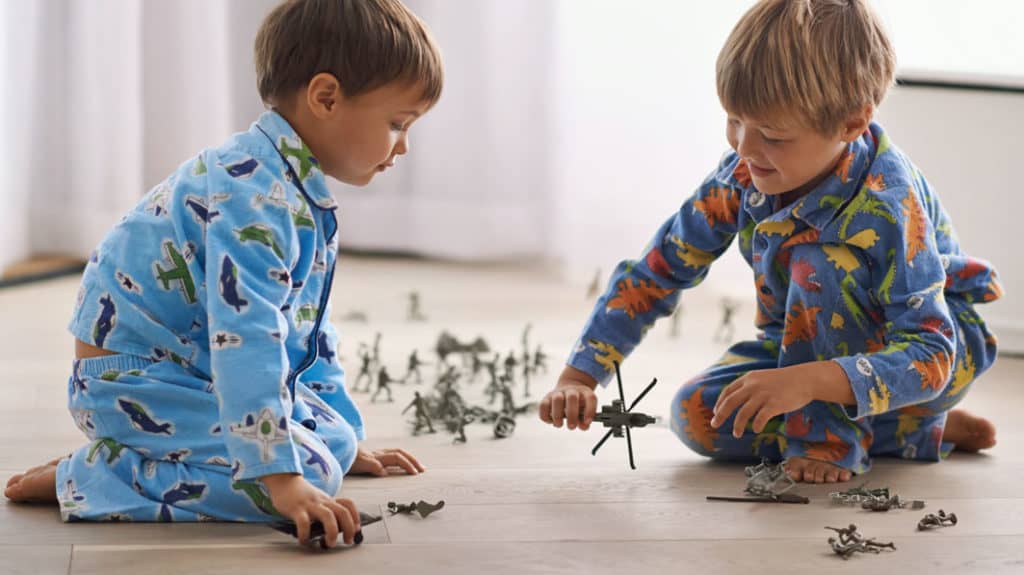
From Empty Nesters To Foster Parents
Setting up for an evening training, I looked forward to sharing the impact of foster care and adoption on the biological children in the family.

Yes, siblings can get along. Here are some tips for training your children to support each other and treat each other well.
Sometimes in the day-to-day conflict of siblings, you may think that sibling rivalry is just the way family life has to be. But it doesn’t. Here are some ideas that other parents have had to train children to treat their siblings well.
My middle school children often argued using biting remarks. My discipline tactics weren’t
working, so I asked them to walk me through their most recent argument.
My son blurted, “She
was annoying me!”
“He came into my room,” my daughter countered.
I briefly explained
how to take ownership of feelings with “I feel” statements and prompted my daughter to go
first.
“I feel he’s irritating,” she said.
I encouraged her to focus on her feelings,
not on her brother’s behavior.
She tried again. “When he came into my room, I felt
irritated.”
This was better.
After a few attempts, my son eventually said, “When she
didn’t want me in her room, I felt left out.”
Through more encouragement and practice, my
children learned how to manage their conflicts in a healthy way — sharing their emotions
rather than attacking each other. Learning this type of communication helped them become better
friends.
—Tannis Oliveri
To encourage siblings to treat each other well, my husband and I put our children’s names on
slips of paper in a jar. At random times throughout the year, we selected a name and assigned a day
to be “[Child’s name] Day.” The rest of the family worked to plan a simple, inexpensive way to
celebrate that person.
Sometimes we made a favorite meal, watched a favorite movie, walked to
a favorite place, decorated the child’s bedroom door or did his or her chores. Then each person made
a card or wrote a note that told the person why he or she was special.
Typically, each family
member had at least two of these days a year. These days helped our kids consider what actions might
make others feel appreciated.
—Kim Van Dunk
When my 4- and 6-year-olds begin to bicker, I ask them to stop talking, stand close and look into
each other’s eyes. Eventually they burst into giggles. This simple exercise ultimately results in
hugs and sisterly silliness, helping them focus on their friendship, not just their frustrations.
They’re then able to talk about their problems because they are more considerate of each other.
—Jenny Nanninga
With five kids under age 10, we don’t have long at family dinners before the little ones get
wiggly. But we don’t excuse anyone from the table until each person has “spotlighted” something good
about a sibling.
One night, our 7-year-old daughter shared, “My spotlight is Levi for sharing
his snack with me when I got home from school.” This practice has helped our kids look beyond
themselves and find things they appreciate about one another.
—Jenny McJunkin
I try to model the behavior I want from my 5-year-old. When we color, I say, “I want to show love
by allowing you to pick the picture we color.” Or I hand her the bigger of two cookies and say, “I
want you to have the best.” She is learning to mimic those same actions with her three siblings.
—Naomi Cassata
My kids have a tendency to hold grudges, letting little grievances build until they become major
issues, sometimes even escalating into a fight. Before this happens, I pull out a roll of toilet
paper and let my kids write down all their grievances, and their list can be as long as they like.
When done, they flush the toilet paper down the toilet. This allows them to release bitter emotions
so a wedge isn’t driven between them.
I’ve recently discovered that this technique also works
when kids are frustrated with homework. If my daughter Karis is struggling with a page of math
problems and is frustrated to the point of exclaiming, “I can’t do this,” I give her a chance to
write down what she doesn’t like about math and flush it. The action gives her a mental break and a
tangible way to reboot her attitude.
—Jared Hottenstein
I challenged my kids to serve their siblings for a week in a top-secret sort of way. The goal was to do something nice without the recipient identifying who had done it. Throughout the week, my children giggled and crept around the house, stealthily leaving notes for each other, making a sibling’s bed or picking up after each other. At the end of the week, we talked about which acts of kindness no one knew who did. It was fun for kids to avoid revealing their hidden acts of kindness because some secrets are worth keeping.
—Evie Lynne Palmer
When my four children need time apart, I set up stations around the house with different activities. At the kitchen counter is Play-Doh with cutters and mats. In the living room are blankets and pillows with a basket of books. In a bedroom is a bin of LEGO blocks, and in the upstairs hallway are a beanbag chair and an electronic device. Healthy snacks are at the kitchen table. My kids, who range from toddlers to tweens, draw numbers to determine the station where they start. Then I set the timer for 20 minutes. When the timer goes off, they rotate to the next station.
—Tannis Oliveri
When one of our three sons received an award or a treat for good behavior, my wife and I had the other two sons practice saying, “Congratulations.” Although they simply went through the motions at first, their words eventually became a sincere celebration of their brothers’ achievements. This helped stave off jealousy and infighting in our family. An unexpected outcome was that sometimes one of the boys would come home with a treat or prize and share it with his brothers.
—Augustine Rene Sanchez
My husband and I bought a couple of fairy wands from a dollar store and tagged each as a “random acts of kindness” wand. Our kids could place them in certain locations after doing small tasks for each other. For example, our girls might place one on a brother’s pillow after making his bed, or our 5-year-old might tape one on the dishwasher after doing a sister’s chore. Then that child would pass it on with another act of kindness to another family member. This gave them permission to be sneaky — in a good way.
—Sara Hague
My two daughters had been playing nicely when their little brother gleefully barged in and snatched their dolls. The playroom turned into a battleground.
How do we teach sibling cooperation when the older kids need space and the youngest often feels left out, pushing and shoving until he’s included?
I’ve started explaining to my girls that their brother sometimes needs an opportunity to learn how to play nicely. I encourage them to teach him how to stack blocks or scoot the doll car around. The girls cooperate with this plan as long as I take action when their brother’s destructive side takes over. If he repeatedly runs off with toys or knocks over their creations, I step in to show my girls that, while I respect their efforts, I don’t expect them to deal with unreasonable behavior.
The mutual understanding has helped my girls have a better attitude about playing with their energetic younger brother.
—Marcia Mishchenko
After talking with our four children about generosity, my husband and I renamed our playroom the Share Room. When arguments break out, we remind them that this room is where we play together and share. If they are not in the mood to share or just need some space, we offer them a chance to play elsewhere. The children own particular toys, which they can play with alone or together. Giving our children a choice helps them see that, as hard as sharing may be, having a playmate is often better than having all your toys to yourself.
—Nicole Burke
When two or more siblings have trouble getting along at our house, there is only one place to go — the couch.
“Aw, Mom. Do we have to?”
“Yes, you know the rule. Sit on the couch and hold hands until you can get along.”
“Hold hands with her?”
“Yes, hold hands with your sister. And if that doesn’t help, you can sit there and hug for 15 minutes.”
“Fifteen minutes?”
“Yes, and if you don’t love each other at the end of 15 minutes, you can sit there and kiss her cheek.”<
“Yikes! Both children looked at each other and quickly grabbed hands.
Needless to say, this method of discipline rarely got past the hand-holding stage.
—Linda Gilden
While I typically stay out of my children’s squabbles to let them work out their disagreements, I inevitably repeat the same litany:
“Your sister or brother is your very best friend. We are a family. It is your job to defend one another against the world, not tear each other down. If a dispute takes place, it should be in defense of one another. Do you understand?”
They didn’t. Or at least I didn’t think so.
You can imagine my surprise when at the first parent-teacher conference their teacher raved about how well my children got along. “It is obvious they love each other very much. They are always standing up for each other on the playground and encouraging one another in class.”
My effort to instill in my children a respect for one another was fruitful. Their loving actions spoke louder than words.
—Jamie Driggers